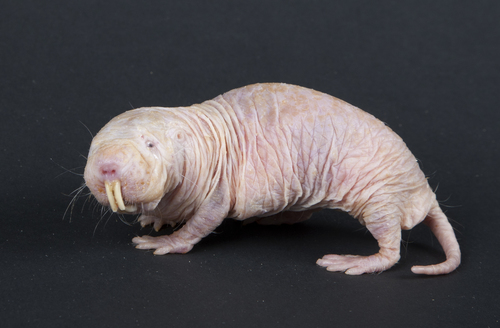
Naked Mole-Rat
The naked mole-rat, Heterocephalus glaber, thrives underground in Eastern Africa's arid regions. Notably hairless, with prominent teeth, these rodents exhibit eusocial behavior, akin to insects. Their cancer resistance and low-oxygen resilience fascinate scientists, highlighting their unique adaptability and crucial ecological roles in soil aeration.
31.2 - 34.0 g
Weight
Length: 8 - 10 cm
Size
Yellow, Pink
Color
228 days
Age of Sexual Maturity
1 month
Age of Weaning
Least Concern
Conservation Status
Stable
Population Trend
Characteristics
The naked mole-rat (Heterocephalus glaber) is a small, burrowing rodent native to Eastern Africa. It is known for its unique physical traits, such as wrinkled skin, lack of fur, and large protruding teeth used for digging. Naked mole-rats live in eusocial colonies similar to those of ants and bees, with a single breeding queen. They exhibit remarkable resistance to cancer and can survive with very low oxygen levels, a trait unusual among mammals.
Distribution Range of the Naked Mole-Rat
Heterocephalus glaber, commonly known as the naked mole-rat, is native to the eastern parts of Africa, specifically in regions of Ethiopia, Kenya, and Somalia.
Naked Mole-Rat's Habitat
Environmental Conditions
The naked mole-rat inhabits arid and semi-arid environments characterized by low rainfall and high temperatures. These regions typically have sparse vegetation with scattered shrubs and grasses.
Ecological Niche
Naked mole-rats are fossorial rodents, meaning they live underground in extensive burrow systems. Their ecological niche includes a highly specialized adaptation to low-oxygen environments and a diet primarily consisting of underground tubers and roots. They live in eusocial colonies similar to those of some insect species, with a single breeding queen and non-reproductive workers.
Copyright @ Nature Style Limited. All Rights Reserved.
 English
English